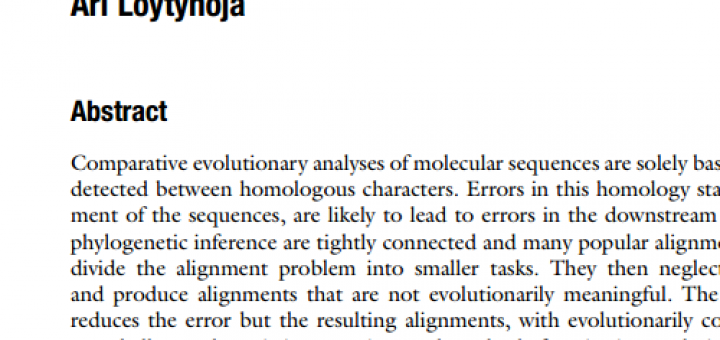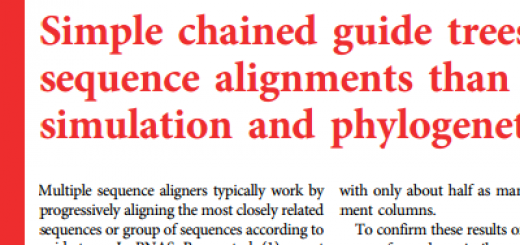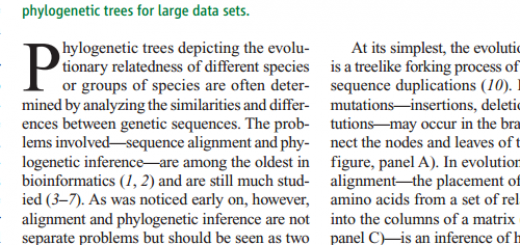Löytynoja, A. Alignment methods: strategies, challenges, benchmarking, and comparative overview. Methods Mol. Biol. 855, 203–235 (2012).
Comparative evolutionary analyses of molecular sequences are solely based on the identities and differences detected between homologous characters. Errors in this homology statement, that is errors in the alignment of the sequences, are likely to lead to errors in the downstream analyses. Sequence alignment and phylogenetic inference are tightly connected and many popular alignment programs use the phylogeny to divide the alignment problem into smaller tasks. They then neglect the phylogenetic tree, however, and produce alignments that are not evolutionarily meaningful. The use of phylogeny-aware methods reduces the error but the resulting alignments, with evolutionarily correct representation of homology, can challenge the existing practices and methods for viewing and visualising the sequences. The inter-dependency of alignment and phylogeny can be resolved by joint estimation of the two; methods based on statistical models allow for inferring the alignment parameters from the data and correctly take into account the uncertainty of the solution but remain computationally challenging. Widely used alignment methods are based on heuristic algorithms and unlikely to find globally optimal solutions. The whole concept of one correct alignment for the sequences is questionable, however, as there typically exist vast numbers of alternative, roughly equally good alignments that should also be considered. This uncertainty is hidden by many popular alignment programs and is rarely correctly taken into account in the downstream analyses. The quest for finding and improving the alignment solution is complicated by the lack of suitable measures of alignment goodness. The difficulty of comparing alternative solutions also affects benchmarks of alignment methods and the results strongly depend on the measure used. As the effects of alignment error cannot be predicted, comparing the alignments’ performance in downstream analyses is recommended.
http://link.springer.com/protocol/10.1007%2F978-1-61779-582-4_7



